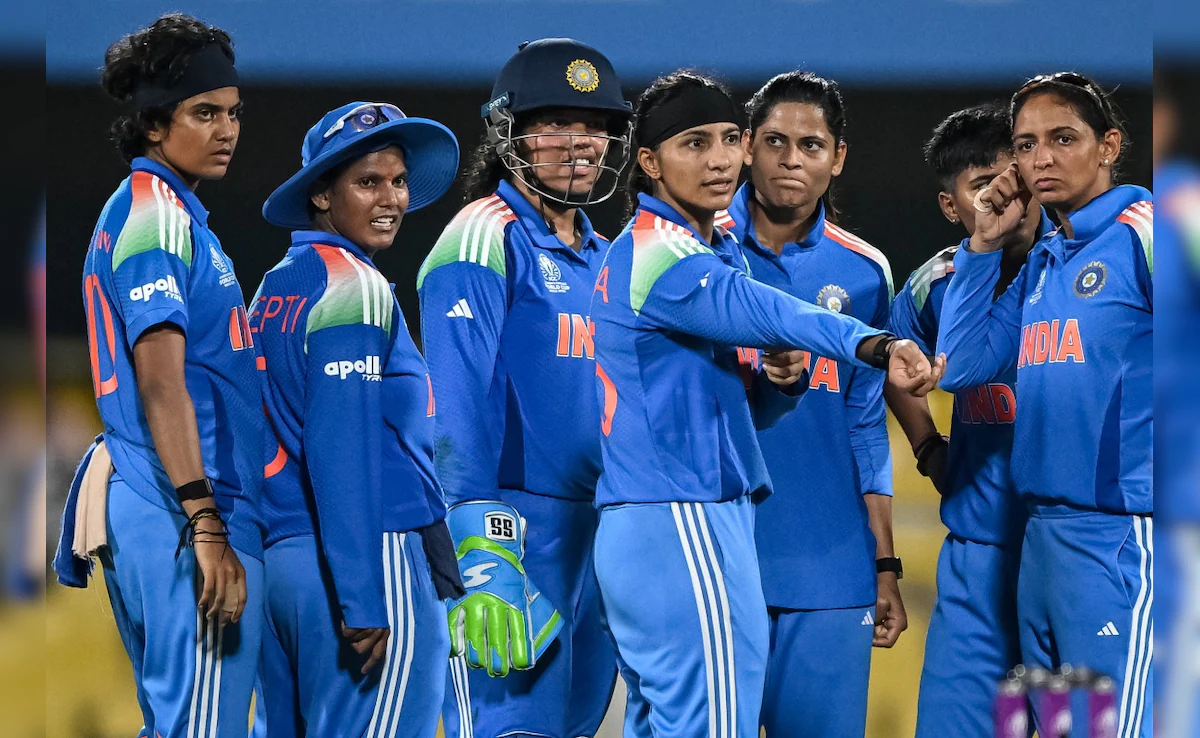
One of the fierciest rivalries in international sport is the India-Pakistan cricket rivalry, and in the women’s sport, no less is on the line. On October 5, 2025, at Colombo’s R Premadasa Stadium, the two countries faced each other in the sixth match of the ICC Women’s World Cup. India Women extended their unbeaten record in ODIs against Pakistan Women, winning comprehensively by 88 runs and moving to the top of the standings table.
Toss and Team Strategy
Pakistan Women chose to bowl first after winning the toss on overcast conditions. The tactic seemed to be on lines to get most out of early swing and restrict India’s batting lineup. Pakistan began with left-arm seamer Sadia Iqbal, but later moved to their usual pace duo of Diana Baig and Fatima Sana. The first few overs were tight, with Baig and Sana bowling tightly and not allowing Indian openers to settle.
The top order, with Smriti Mandhana and Harleen Deol, could not get into rhythm. Mandhana was dismissed for 23 after Sana bowled a tight spell, who bowled with accuracy and pace. Pakistan’s bowling team kept pressure on through dot balls and intelligent field placements, and India were forced into playing defensively.
India’s Innings: Grit Over Glamour
India made a total of 247 runs in their 50 overs, a score that was competitive but not formidable. What was significant about the score was that no fifty-plus partnership was achieved. Harleen Deol scored the top with 46, and there was a late punch delivered by Richa Ghosh with an unbeaten 35 in just 20 balls. The innings was constructed on determination and not showbiz, with India playing 78 dot balls during the first 20 overs.
Pratika Rawal scored 31, and India was able to keep the scoreboard rolling despite losing wickets at regular intervals. The pitch wasn’t batting-friendly, as assured by Jemimah Rodrigues at the break of the innings. Pakistan’s bowlers, particularly Diana Baig with 4 for 69, and Fatima Sana with 2 for 38, prevented India from gaining any momentum.
Pakistan Chase as Sidra Amin Stands Alone
Chasing 248, Pakistan Women were never in control. Sidra Amin struck a lone hand, scoring 81 from 106 balls, holding the innings together as wickets fell around her. Her dismissal brought an end to the Pakistan resistance, as the team was bowled out for 159 in 43 overs.
India’s bowling was clinical. Kranti Gaud led the attack with 3 for 20, being named Player of the Match. Deepti Sharma claimed 3 for 45, and Sneh Rana took 2 for 38. The Indian bowlers maintained precise lines and varied their pace, making use of Pakistan’s inability to rotate strike and build partnerships.
Fielding and Missed Opportunities
India’s fielding was not flawless. There were missed chances and run-out opportunities that could have been expensive against a more attacking side. Still, Pakistan could not take advantage of these lapses. Their failure to keep the needed run rate and create pressure by partnerships proved expensive.
Sidra Amin’s innings was the lone silver lining for Pakistan. She displayed technique and poise, but there was no support from the other end. The middle order fell apart under stress, and the lower order did not show much resistance.
Tactical Breakdown – India’s Bowling Depth
One of the most notable aspects of the match was India’s bowling depth. Kranti Gaud and Deepti Sharma led the attack, with Renuka Singh and Sneh Rana covering the back, and India offered a well-balanced bowling attack. The ability to take wickets during the middle overs and limit scoring chances proved vital in holding back a moderate score.
India’s move to bring in Richa Ghosh at number eight was worth it. Her rapid runs towards the end provided India with the buffer they required. Harmanpreet Kaur’s captaincy was positive, as good bowling changes and field settings kept Pakistan on tenterhooks.
Pakistan’s Struggles – Unreliability of Middle Order
Pakistan’s batting struggles persisted in this game. Following a disappointing performance against Bangladesh in a previous match of the tournament, they were anticipated to make a comeback. Nonetheless, the absence of middle order solidity and ill-judged shot selection worked against them. The team could not make the most of Sidra Amin’s platform, and their failure to counter opponent spinners stood out.
Team captain, Fatima Sana, was razor-sharp with the ball but failed to ignite a comeback with her bat. The side’s overdependence on some batsmen and the weak depth in the batting order are concerns that linger as the tournament progresses.
Historical Context – India’s Dominance Continues
With this win, the Women in Blue extended their winning streak against Pakistan Women in ODIs to 12 matches. The psychological edge was evident throughout the game. Even when India was poor in the field, they never appeared panicked. Pakistan, on the other hand, seemed uncertain and reactive.
This victory also brought India to the top of the points table, above Australia. Two wins out of two games, and India’s campaign is running great guns. Pakistan, meanwhile, lost both their matches and will have to drastically change their fortunes in order to stay in the semi-final mix.
Player of the Match – Kranti Gaud’s Breakthrough Performance
Kranti Gaud’s 3 for 20 spell proved to be the match-turning performance. Her ability to swing the ball and keep a tight line made her perennially dangerous. She sent important batters back in the hut and shattered Pakistan’s momentum at vital moments. Not only did this earn her the Player of the Match, but it also made her one of India’s most important bowling resources.
India’s Road to the Knockouts
India’s challenge going forward is going to be consistency. Though the batting proved to be gritty, lack of big partnerships and fielding mistakes are something that they need to work on. Their strength lies in the bowling unit as well as lower-order depth, but tougher teams will test their mettle.
Pakistan, however, need to patch up in a hurry. Their campaign hangs in the balance, and until they sort out their collapse with the bat and errors in the field, their World Cup campaign might end prematurely.


Leave a Reply